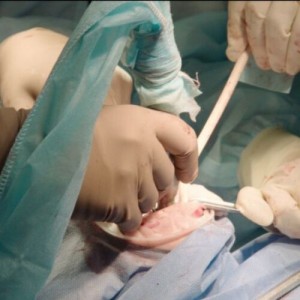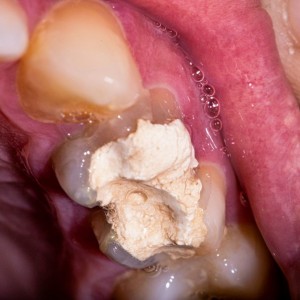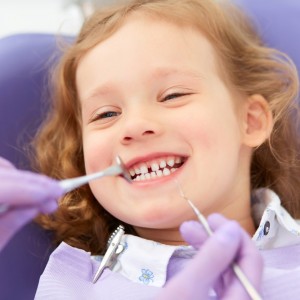
Dr. Jorge Castillo: 'To be a dentist you have to have a special vocation'
Dr. Jorge Castillo, DDS, MdentSci, MSD, PhD, is a pediatric dentist and orthodontics with degrees from the University of Connecticut and the University of Washington. He is a professor in the Department of Stomatology of Children and Adolescents, Peruvian University Cayetano Heredia (UPCH) and an affiliate assistant professor in the Department of Oral Health Sciences at the University of Washington. Castillo is a diplomate of the American Board of Pediatric Dentistry and a member of the board of directors of the UW's DeRouen Center for Global Oral Health.
Castillo has worked extensively in collaborative programs between the UW and UPCH. He is a member of several local and international pediatric dentistry and orthodontics associations and also part of the editorial board of local and international journals. Castillo served as president of the International Association of Paediatric Dentistry from 2013 to 2015. He has published numerous studies and provided lectures around the world. This interview was originally published on Odontologia33.
Q: In your role as a professor at universities, how do you envision the next generation of pediatric dentists?
Castillo: Pediatric dentistry is a very important specialty because the management of the child patient at a biological and psychological level will have a very important impact in the future. Young pediatric dentists begin to have a different view of the specialty, because pediatric dentistry is being oriented in a deeper way to the growing patient. We treat a human being who has emotions and that should be the first thing we must take into account when reviewing a child patient and proposing an oral treatment. Young pediatric dentists are being trained to be more conservative in the management of the disease and closer in the management of emotions. That combination is key to success in patient motivation, achieving a growing person who remains healthy and without fear of the dentist for life.
Q: What advice would you give to students who may be considering pediatric dentistry?
Castillo: To be a dentist you have to have a special vocation and to treat children you have to have an additional vocation. If the dentist enjoys what he does and strives to have a well-constituted practice, all the rest falls under its own weight. In addition, the child population is very large. For example, in the U.S., pediatric dentistry is one of the most profitable specialties in the world of dentistry. In short, if you have a vocation, you like what you do and you form deeply in it, success comes alone.
Q: You completed your postgraduate training in the U.S., where dental specialties exist. In Europe, specifically in Spain, we are still debating the creation of specialties. What are your thoughts on the debate around creating a pediatric dentist specialty?
Castillo: In medicine, pediatrics is one of the most important specialties, because the management of the child and its biology is a special and unique area. And not only because of the variety of unique diseases that can occur in the child, but also because it leads to a completely different management of the patient from that of an adult. In dentistry this figure should be repeated. There are unique and special clinical conditions in the child, but in addition to that, special preparation is needed to care for a patient in their different stages of physical and mental growth, the emotional part is very different from that of an adult. Within the spectrum of patients we see, we may have subgroups with different characteristics, from newborn to adolescent. The specialty of pediatric dentistry forms the fundamental knowledge to promote the integral assistance of the child patient at each stage until reaching the young adult.
Q: What will it take for pediatric specialties to catch on in other countries?
Castillo: This specialty has been recognized in many countries. Fortunately, in many continents where the specialty was not recognized, it is now being considered. For example, recently the specialty of pediatric dentistry was created in South Africa.
In a recent survey we conducted from the IAPD, we found that the specialty was recognized in 80% of the countries surveyed. Hopefully soon pediatric dentistry will be recognized as a dental specialty in 100% of the countries of the world.
Q: As president of the IADP, what would you highlight as important changes in future professional practice in pediatric dentistry?
Castillo: A great advantage of the current times is globalization and the rapid dissemination of knowledge. The management of the child patient, with nuances, has many similarities in many parts of the world. The more conservative management of dental caries, which is not new, but which has become very widespread in recent years, brings a great advantage to the specialty. Not only because of the demonstration of the effectiveness that can be had by being conservative, but also because it provides more friendly treatments for the child, which will help a lot in the cooperation of the same. Technology also has a very large impact on the diagnosis of caries, on the management of malocclusions, on new materials, among others, which will allow a more effective pediatric dentistry, and at the same time more human.
Q: And in research?
Castillo: It is amazing how many high-quality studies appear in pediatric dentistry journals. In many parts of the world there are very consolidated groups, which are doing very interesting research work. The most important thing is and should continue to be the study of various ways to prevent and treat dental caries, being the most prevalent chronic disease in humans, and with a very profound impact on the quality of life of children.
Q: Which profile of child patients do you treat most frequently?
Castillo: In my practice I treat patients of various profiles: young patients, patients with malocclusions and children with different types of pathology. There is not one particular group of patients I see more frequently than others.
Q: What percentage of patients do you treat under conditions of general anesthesia or sedation?
Castillo: In pediatric dentistry it is important to have at hand different behavioral management options for the patient and choose the type of management according to the needs of the child and the expectations of the parents. A smaller percentage of patients are treated with sedation or general anesthesia in our practice. This has been decreasing over time, with the introduction of new conservative strategies in the management of dental caries.
Q: Many think that any dental treatment is valid for these stages of life. What is your opinion and what differences do you find in therapy in the U.S., Latin American countries and Europe?
Castillo: Treatment in children should be, as with adults, targeting each individual and not treating it as "one size fits all." Each child is different, will have different needs and the disease will have a different dynamic in each one. There are materials that work much better in children, such as preformed crowns or glass ionomers. Globalization has made the way of handling in many parts of the world very similar. We have gone from a radical pediatric dentistry to a more conservative one around the world and that is a great benefit for the child.
Q: When it comes to preventing caries at such an early age, where are we going wrong?
Castillo: We are a specialty that has always been concerned with finding ways to prevent tooth decay. There are several preventive strategies and most pediatric dentists seek to apply them to all our patients. The question is whether all the preventive strategies we have are enough to definitively defeat the disease and perhaps the answer is "no." In addition, we must consider that the management of dental caries also depends on the lifestyle of people, including hygiene habits or dietary habits, and the control we can have over that in families is often very limited.
 Tag
Tag
 Related articles
Related articles
Pediatric dentistry 09 October 2025
Smart materials in pediatric dentistry: Revolutionizing care for enhanced outcomes
In the realm of pediatric dentistry, smart materials are reshaping conventional approaches, introducing a responsive and tailored dimension to treatment.
Pediatric dentistry 24 September 2025
The objective of this study was to survey members of the American Academy of Pediatric Dentistry (AAPD) regarding their use of behavior management techniques.
Pediatric dentistry 08 August 2025
Management of pigmented gingiva in child patient: a new era to the pediatric dentistry
Gingival health in the form of size, shape, consistency and appearance are essential components responsible for an attractive smile as well as may cause unpleasant appearance
Pediatric dentistry 17 July 2025
Pediatric restorative dentistry is a dynamic combination of ever-improving materials and tried-and-true techniques.
 Read more
Read more
Editorials 10 October 2025
With proud smiles and crisp white coats, ninety-three learners from the DDS Class of 2029 and the International Dentist Pathway Class of 2028 marked the start of their dental careers at the UCSF...
Periodontology 10 October 2025
Continuous professional development (CPD) in Periodontology refers to the overall framework of opportunities that facilitate a life-long learning practice, driven by the learner-practitioner and...
TheraBreath, the #1 alcohol-free mouthwash brand in the U.S.*, has introduced a new line of dentist-formulated, clinically tested toothpastes designed to support professional oral care...
News 10 October 2025
New officers and trustees were installed at the Minnesota Dental Association’s Leadership Conference on September 19 in Minneapolis.
News 10 October 2025
Smartee Denti-Technology today announced that Professor Gang Shen, its Chief Scientist and Executive President of TaiKang ByBo Dental, has once again been named to the World’s Top 2% Scientists...















